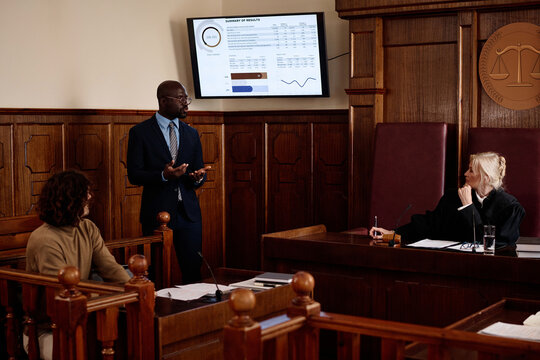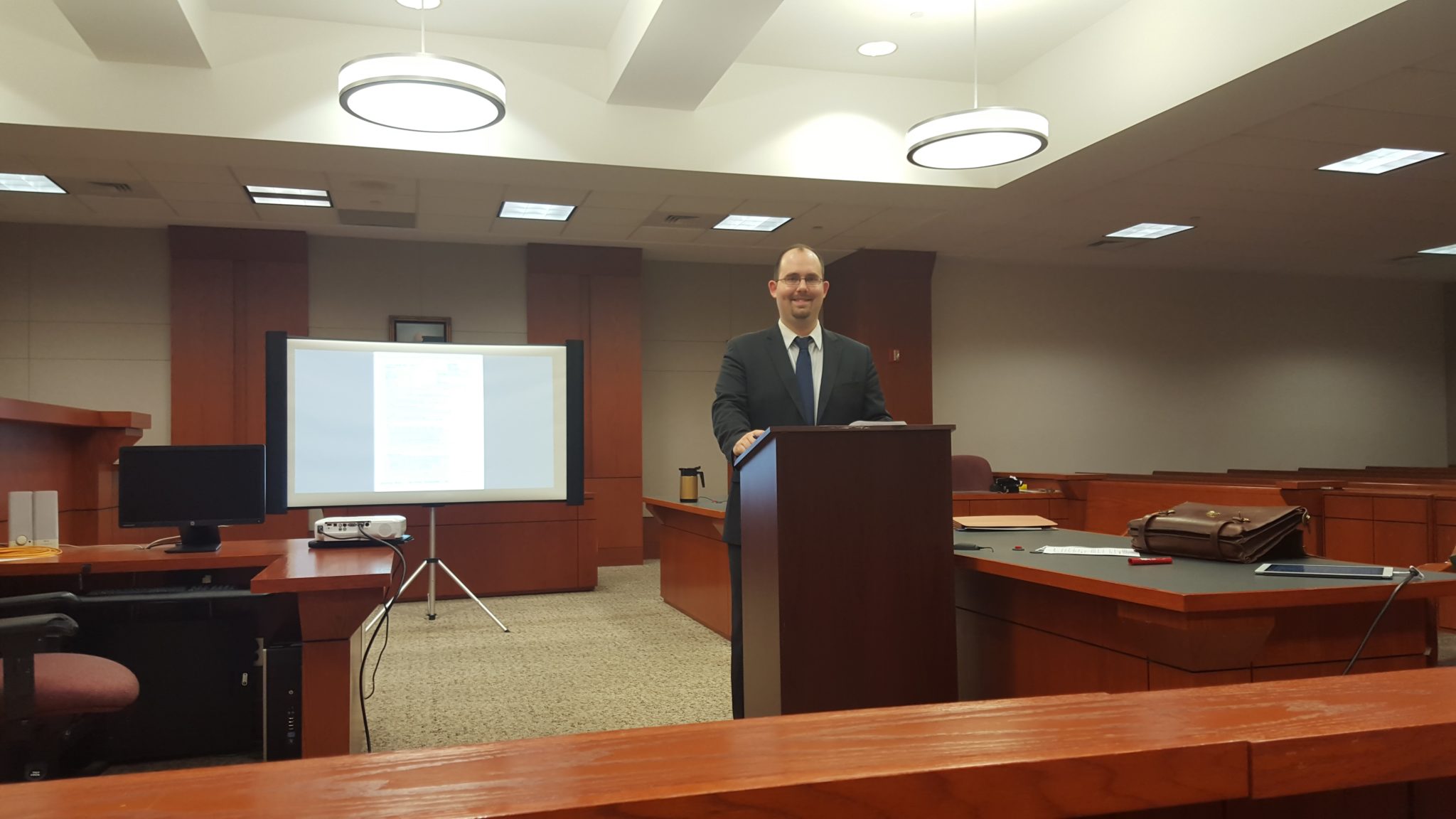Browsing the Complexities of Test Presentations: Tips for Seamless Delivery and Engaging Arguments
In the realm of lawful process, the art of test discussion stands as a crucial factor of success. The intricacies integral in trial presentations require a delicate balance of skill, skill, and method.

Understanding Trial Goals
To properly navigate a trial, it is important to have a clear understanding of the purposes that require to be achieved. Before tipping right into the courtroom, legal teams should define their objectives and preferred end results. These purposes work as guiding principles throughout the test, forming strategies and influencing decision-making processes.
Understanding trial objectives includes a detailed evaluation of the situation, lawful precedents, and the client's benefits. Trial Presentations. It requires a meticulous evaluation of the facts, identifying essential issues, and anticipating potential challenges. By establishing details and quantifiable goals, lawyers can customize their debates and discussions to align with the desired outcomes
Additionally, a clear understanding of trial goals allows legal teams to focus on proof, witnesses, and legal arguments properly. It enables the advancement of a meaningful narrative that reverberates with the discretionary, enhancing the general situation presentation.

Organizing Proof Efficiently
Having a clear understanding of test purposes lays the foundation for organizing evidence properly in legal proceedings. By straightening the presentation of proof with the desired end results of the trial, lawful teams can reinforce their disagreements and enhance their persuasiveness.
One more crucial element in organizing proof effectively is developing a sensible flow. Offering evidence in a consecutive and coherent way can help develop an engaging narrative that sustains the lawful arguments being made. In addition, using visual help such as timelines, charts, or charts can better improve the organization of proof and aid in clearing up intricate relationships or sequences of occasions.
Moreover, making certain that all evidence presented is permissible and pertinent to the instance is vital. Unimportant or inadmissible proof can detract from the toughness of the disagreement and potentially hurt the integrity of the presenting celebration. A careful review and option process ought to be carried out to include just the most impactful and legitimately audio evidence in the test presentation.
Crafting Convincing Stories
Crafting compelling narratives plays a crucial duty in offering influential debates throughout lawful process. A well-crafted narrative has the power to captivate the target market, stimulate emotions, and ultimately guide the decision in favor of the presenting event. When building a story for a test discussion, it is necessary to establish a clear storyline that highlights bottom lines and attaches them in a meaningful manner. Begin by detailing the truths of the case in an engaging manner, guaranteeing that the sequence of occasions is simple to adhere to. Present characters successfully, offering background info that helps the target market understand their actions and inspirations. Furthermore, including vivid descriptions and appealing language can bring the story to life, making it much more unforgettable for the judge and court. By weaving with each other proof, testimony, and legal arguments right into a natural and convincing story, lawful professionals can efficiently support for their clients and enhance the chance of a desirable end result in the court.
Grasping Aesthetic Aids
Efficient use visual help is essential to improving the influence and clarity of trial presentations. Aesthetic help, when made use of strategically, have the power to simplify complex details, reinforce bottom lines, and leave a lasting perception on the judge and jury. To understand visual help in test presentations, it is important to ensure that they are clear, succinct, and appropriate to the arguments being get redirected here made.
When including aesthetic aids, such as graphes, graphs, pictures, or timelines, right into a test presentation, it is important to keep them visually appealing yet specialist. The visuals should complement the spoken arguments, providing a visual representation of the information being talked about without overwhelming the audience with unnecessary details.
Furthermore, exercising with the visual aids beforehand is vital to make sure a seamless delivery during the test. Acquainting oneself with the material, shifts, and timings of each visual aid can help preserve the flow of the presentation and prevent technological problems that may occur.
Delivering Impactful Closing Arguments
An engaging closing argument serves as the end result of a next trial discussion, encapsulating the core story and persuading the judge and court towards a desirable decision. Begin by laying out the main disagreements that support your client's placement, emphasizing why the proof offered throughout the trial sustains your story.
Moreover, integrating emotional allure can further reinforce your closing argument. Ultimately, a well-crafted closing disagreement ought to leave an enduring impact, engaging the court and court to rule in your customer's support.
Final Thought
Finally, grasping test discussions includes recommended you read comprehending goals, arranging evidence, crafting narratives, utilizing visual aids, and supplying impactful closing debates. By applying these approaches properly, legal representatives can offer their instance flawlessly and make engaging disagreements in the court. It is important to navigate the complexities of test discussions with precision and skill to attain success in lawful procedures.
By lining up the presentation of proof with the preferred outcomes of the test, legal teams can reinforce their arguments and boost their persuasiveness (Trial Presentations). To master aesthetic help in trial presentations, it is crucial to make certain that they are clear, succinct, and relevant to the arguments being made
An engaging closing debate offers as the culmination of a test presentation, encapsulating the core story and convincing the court and court towards a desirable decision. Begin by outlining the major arguments that sustain your client's placement, highlighting why the evidence offered throughout the trial sustains your narrative.In verdict, grasping test presentations entails comprehending purposes, organizing proof, crafting narratives, making use of visual help, and delivering impactful closing arguments.
Comments on “Why Your Following Case Requirements a Solid Trial Presentation: Insights and Techniques for Attorneys”